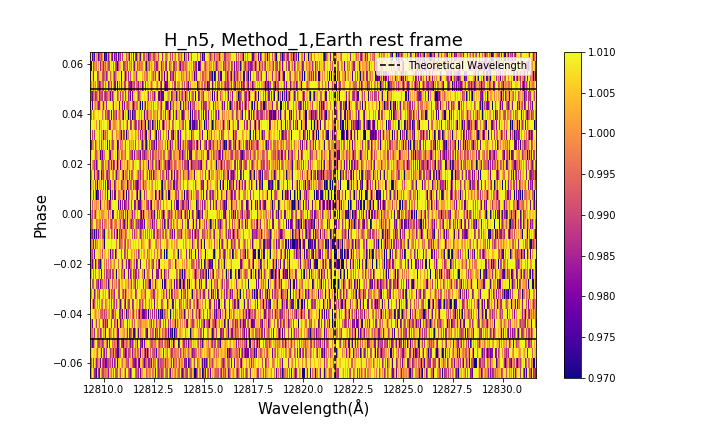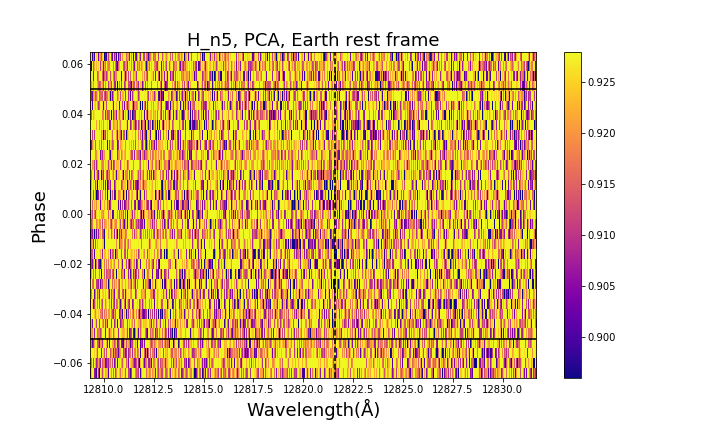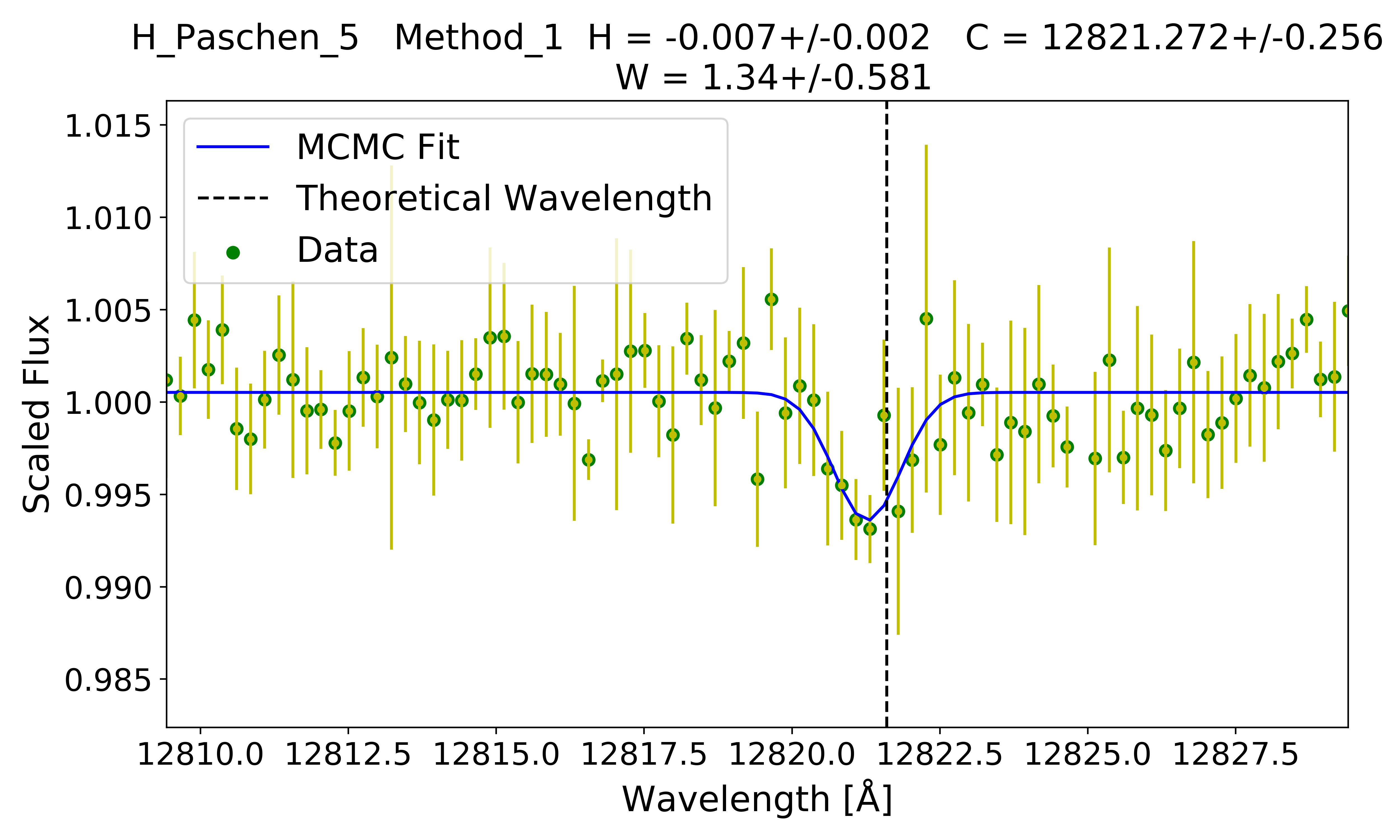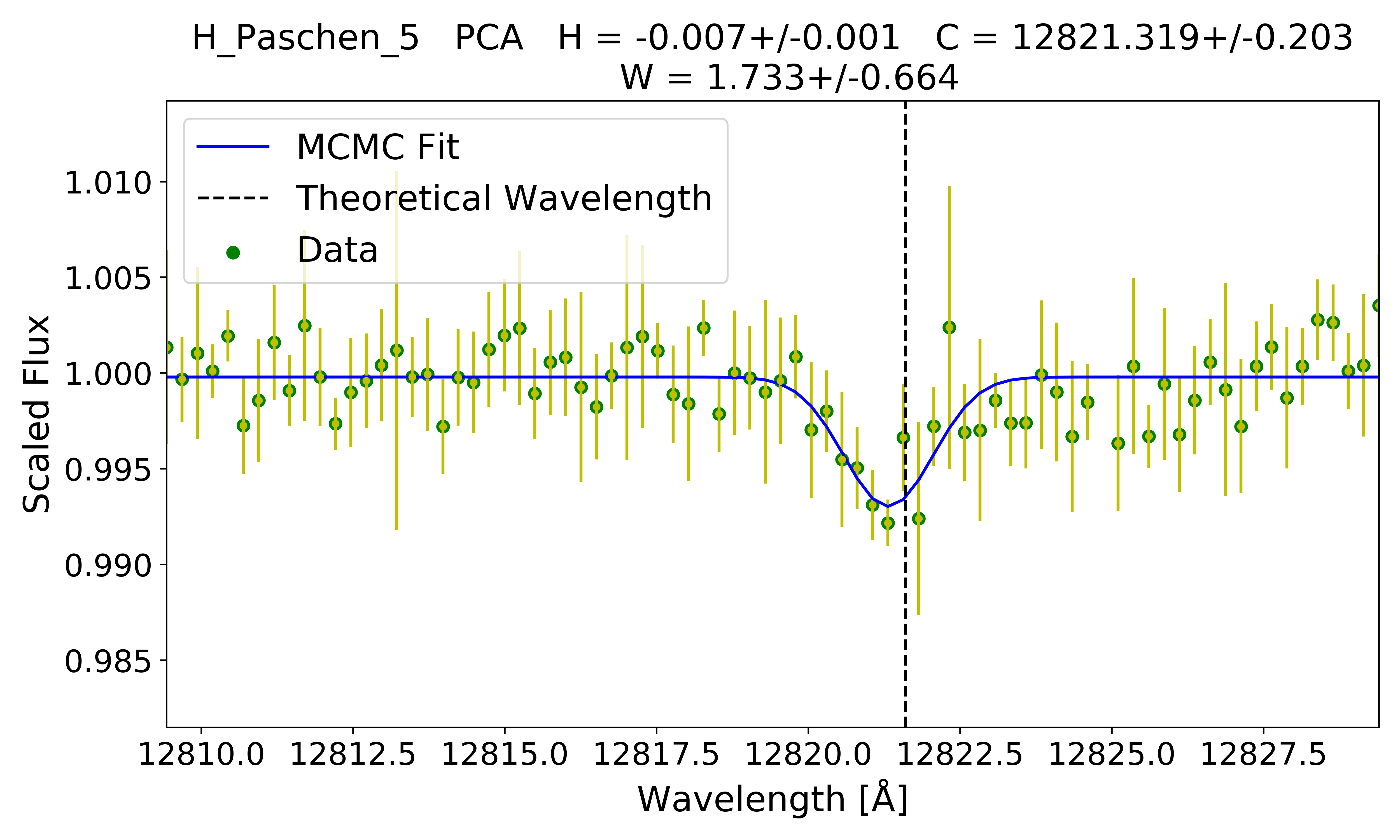The datasets used in this project were observed by CARMENES in the Near-Infrared channel on August 6 and September 21, 2017. The spectra which have the mean SNRs lower than 40 are removed. There are two methods applied to the datasets to remove the static flux along with the orbital phases. In the first method, The mean spectrum of all the spectra in the times series is fitted to each spectrum with a second-order polynomial, which will remove the main variability in the depth of the static lines. In the next step, the flux in each wavelength grid is fitted as the function of time with a second-order polynomial to remove the extra change of water telluric lines. (Brogi & Line, 2019) The second method is using the principal component analysis. The largest singular value of the time series spectrum matrix is set to be zero to remove the static flux (telluric and stellar lines) while maintaining the planet signal as much as possible. After the static flux has been removed in the time series matrix, the spectra have been aligned to the planet rest frame and then summed up to be the transmission spectrum. (de Kok et al., 2013) The RM and CLV effects from the star during the transit are further removed from the transmission spectrum.

Search for absorption hydrogen Paschen lines on the ultra-hot Jupiter KELT-9b

- 1 Leiden Observatory, Leiden




